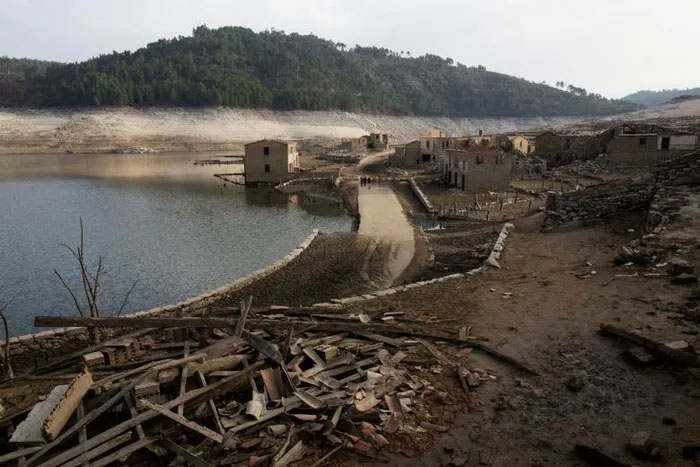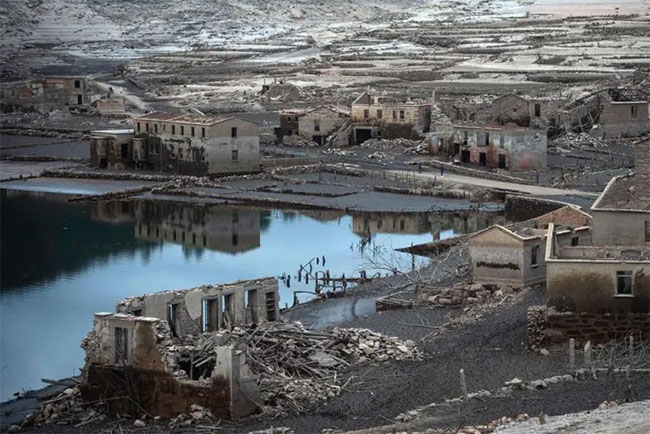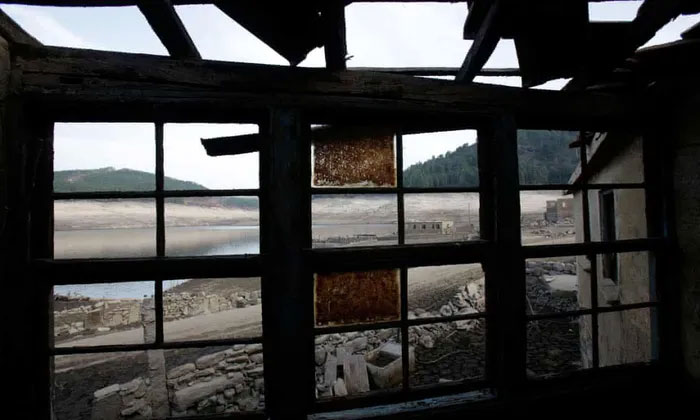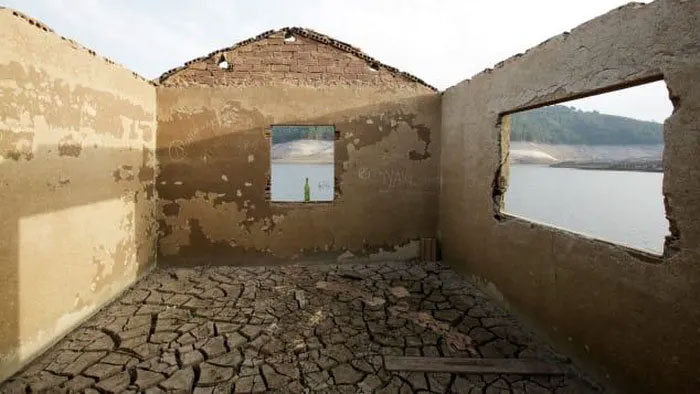The ruins of a “ghost” village have emerged after drought conditions dried up a dam at the Spain-Portugal border, attracting curious crowds to witness the sight.

The ancient village of Aceredo was submerged by the Limia River in 1992 to create a reservoir. (Photo: Reuters)
In 1992, Aceredo village in Northwestern Spain was submerged to create a reservoir. Recently, as the water level in the Alto Lindoso reservoir dropped to just 15% due to drought, the village resurfaced, creating a grim and eerie landscape.
“I feel like I am watching a sad movie. This scene may repeat over time due to drought and climate change,” shared 65-year-old Maximino Perez Romero as he visited the “ghost” village.

After the water receded, the village appeared hauntingly desolate. (Photo: Reuters)
Walking on the cracked muddy ground, visitors found partially collapsed roofs, bricks and tiles, and even a drinking fountain that still dripped water. Empty beer bottles were stacked up, and an old rusty car leaned against a stone wall.
Maria del Carmen Yanez, the mayor of Lobios, stated that the drought in this region has persisted for several months and that the neighboring Portuguese company EDP tightening electricity supplies has worsened the situation.

The Alto Lindoso reservoir is down to 15% of its capacity. (Photo: Reuters)
On February 1, the Portuguese government requested six dams, including Alto Lindoso, to cease water usage for electricity generation and irrigation due to the increasingly severe drought.
The stability of reservoirs in this border area is also a growing concern. Data from Spain’s Ministry of the Environment shows that reservoirs in the country are at 44% capacity, significantly lower than the average of around 61% over the past decade, yet still higher than the levels recorded during the drought of 2018.


One source indicated that drought indicators suggest the situation will continue to worsen in the coming weeks.

















































